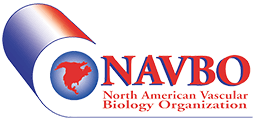
New Insights into Lymphatics and Lymphatic-related Cells from the Zebrafish
March 12, 2020
BRANT WEINSTEIN, PH.D.
Associate Scientific Director
NICHD, NIH
Took place on March 12, 2020 at 1:00pm EST
BRANT WEINSTEIN -
Dr. Brant M. Weinstein received his Ph. D. from the Massachusetts Institute of Technology and carried out postdoctoral studies in the laboratory of Dr. Mark Fishman at the MassachusettsGeneral Hospital. He joined the NICHD as a Primary Investigator in 1997. He became Deputy Director of the NICHD Program in Genomics of Differentiation in 2007 and then Director in 2010. He currently serves as Associate Scientific Director leading the NICHDintramural Division of Developmental Biology.
Dr. Weinstein is a leading expert on zebrafish vascular development. His laboratory developed a widely used confocal micro-angiography method, compiled an atlas of the anatomy of the developing zebrafish vasculature, developed numerous vascular-specific transgenic fish lines, and pioneered methods for high resolution in vivo imaging of zebrafish blood vessels. His laboratory has used all of these tools and methods to make a variety of important discoveries in the areas of vascular specification, differentiation, and patterning, including a novel pathway specifying arterial identity, a role for neuronal guidance factors in vascular patterning, a mechanism for vascular tube formation in vivo, and the identification of a lymphatic vascular system in the zebrafish.
PRESENTATION -
The lymphatic vascular system is a hierarchically organized, complex network of blind-ended vessels essential for tissue fluid homeostasis, immune trafficking, and absorption of dietary fats in the human body. Despite its importance, the assembly of the lymphatic vasculature is still not well understood. We have been using the zebrafish as a powerful model organism to study lymphatic development using high-resolution optical imaging and sophisticated genetic and experimental manipulation. I will describe our work to better understand how lymphatic vessels develop and the molecular mechanisms that guide their growth and patterning. I will also discuss our recent findings characterizing a novel lymphatic-related cell population residing in the brain meninges.
